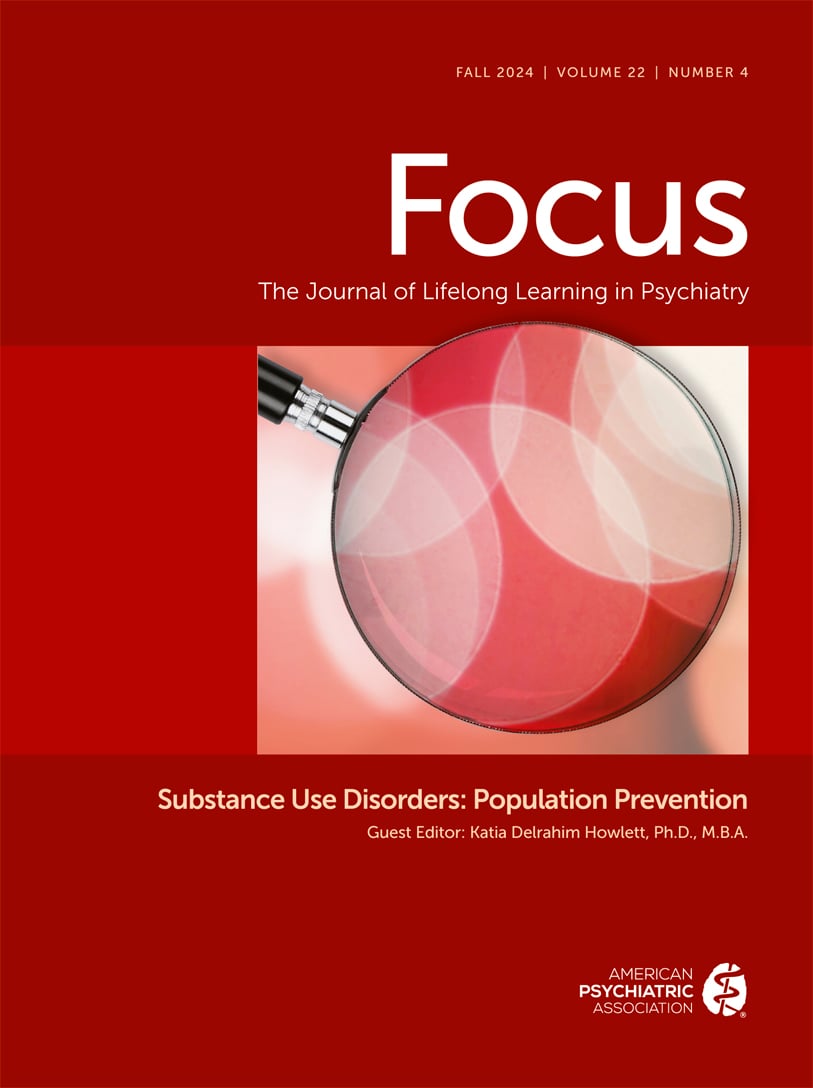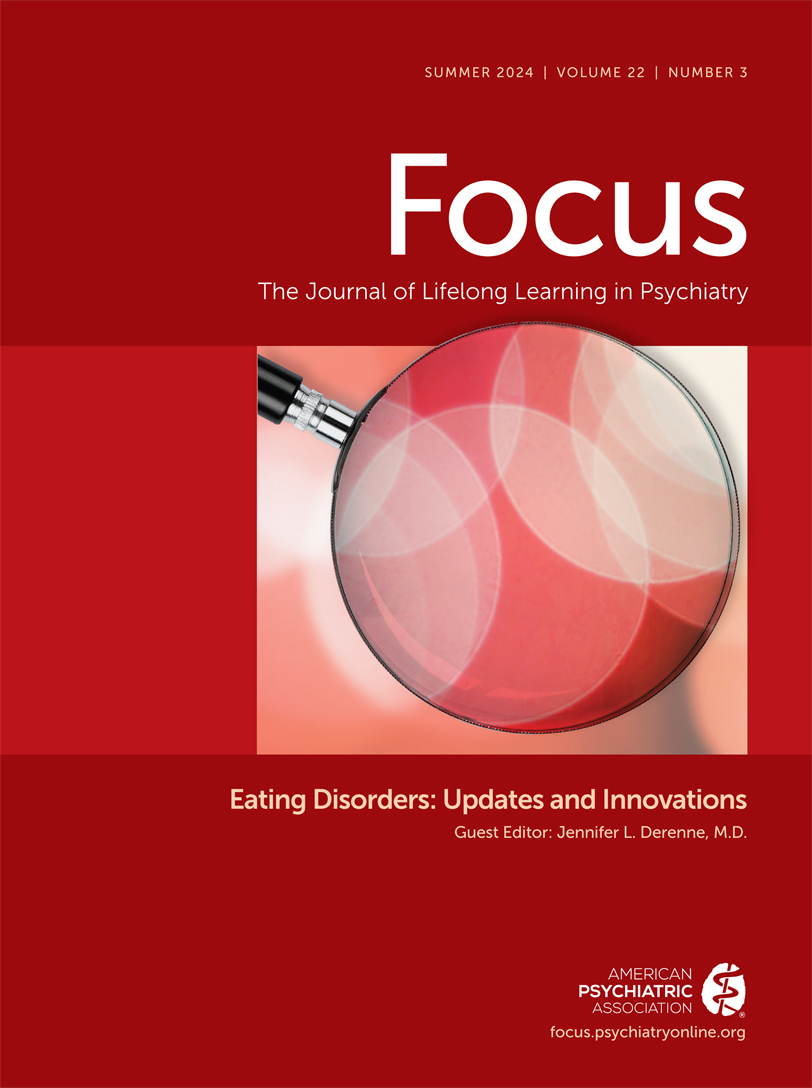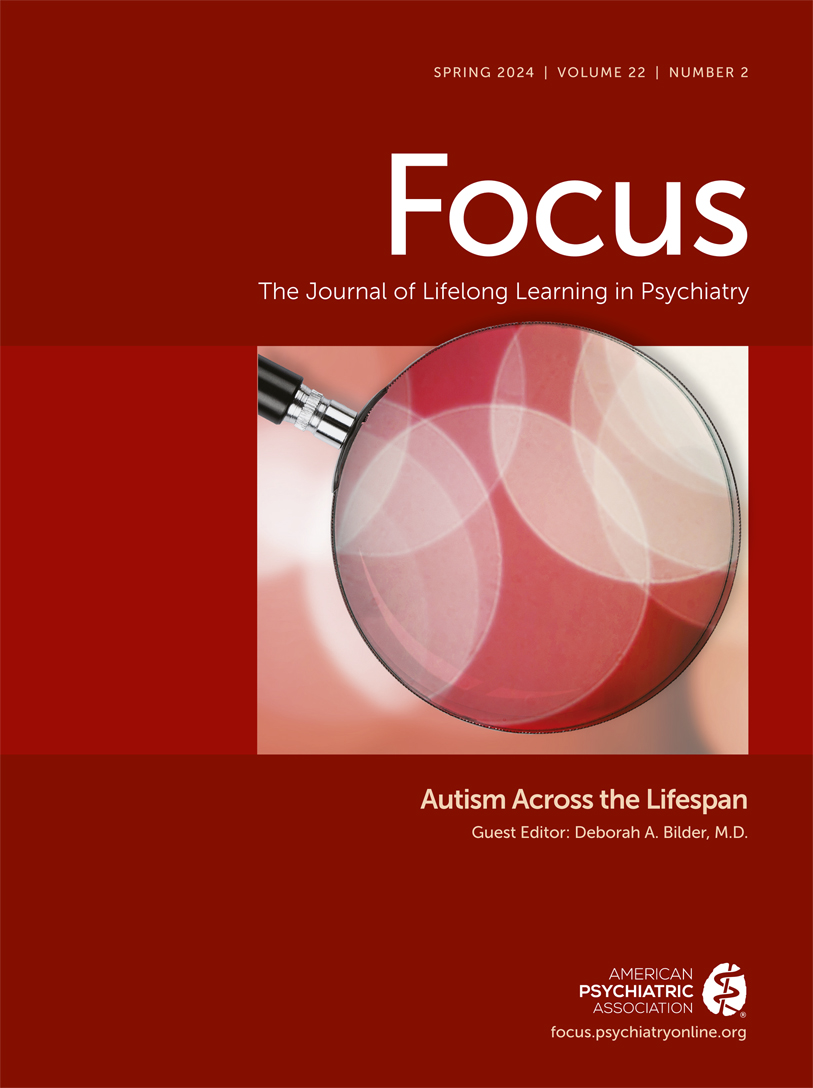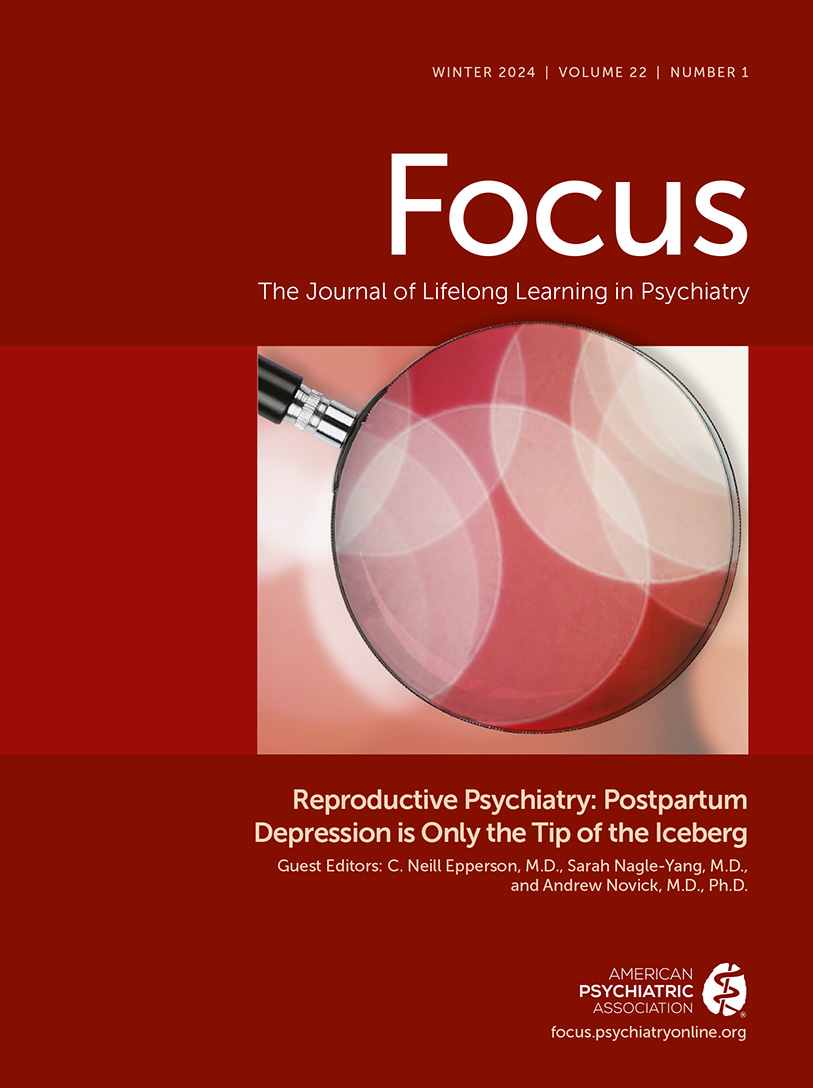Focus
- Volume 9
- Number 4
- October 2011
FROM THE GUEST EDITOR
CLINICAL SYNTHESIS
Publication date: 01 October 2011
Pages415–422In this brief update on bipolar disorder (BD), I discuss the classic definitions of BD and the revisions to those definitions that are proposed for DSM-5. Proposed revisions include the addition of a mixed features specifier that could be added to any ...
https://doi.org/10.1176/foc.9.4.foc415Publication date: 01 October 2011
Pages423–427Bipolar disorder is one of the most common major psychiatric conditions. It is highly recurrent and is associated with significant morbidity and mortality. Because of lack of understanding of its biological underpinning, both diagnosis and treatment of ...
https://doi.org/10.1176/foc.9.4.foc423Publication date: 01 October 2011
Pages428–434Both bipolar I and bipolar II disorders are highly comorbid with substance use disorders, and this comorbidity is associated with more severe illness course and early mortality. There is overdiagnosis of bipolar disorder in substance-misusing populations, ...
https://doi.org/10.1176/foc.9.4.foc428Bipolar Disorder with Co-Occurring Eating Disorders: Prevalence and Pharmacotherapeutic Implications
Publication date: 01 October 2011
Pages435–448Bipolar disorder and eating disorders co-occur more often than expected by chance alone, yet little is known about the recognition and treatment of these disorders when they co-occur. This article briefly reviews studies examining the co-occurrence of ...
https://doi.org/10.1176/foc.9.4.foc435Publication date: 01 October 2011
Pages449–454Whereas pharmacotherapy often forms the foundation of a treatment plan for bipolar disorder, increasing evidence suggests that psychosocial interventions as adjuncts to pharmacological treatment may improve medication adherence as well as bolster ...
https://doi.org/10.1176/foc.9.4.foc449Publication date: 01 October 2011
Pages457–460This exercise is designed to test your comprehension of material presented in this issue of FOCUS as well as your ability to evaluate, diagnose, and manage clinical problems. Answer the questions below, to the best of your ability, on the information ...
https://doi.org/10.1176/foc.9.4.foc457INFLUENTIAL PUBLICATIONS
Publication date: 01 October 2011
Pages471–476Background: Few studies have prospectively examined the relationships of sleep with symptoms and functioning in bipolar disorder. Methods: The present study examined concurrent and prospective associations between total sleep time (TST) and sleep ...
https://doi.org/10.1176/foc.9.4.foc471Publication date: 01 October 2011
Pages477–487Background: There is substantial inconsistency in results of brain structural magnetic resonance imaging studies in adult bipolar disorder.This is likely consequent upon limited statistical power of studies together with their clinical and methodological ...
https://doi.org/10.1176/foc.9.4.foc477Publication date: 01 October 2011
Pages488–499Background: Lithium carbonate and valproate semisodium are both recommended as monotherapy for prevention of relapse in bipolar disorder, but are not individually fully effective in many patients. If combination therapy with both agents is better than ...
https://doi.org/10.1176/foc.9.4.foc488Publication date: 01 October 2011
Pages500–525Objectives: These guidelines are based on a first edition that was published in 2002, and have been edited and updated with the available scientific evidence until September 2009. Their purpose is to supply a systematic overview of all scientific evidence ...
https://doi.org/10.1176/foc.9.4.foc500Publication date: 01 October 2011
Pages526–539Bipolar disorder (BPD) is a devastating illness that is characterized by recurrent episodes of mania and depression. In addition to these cyclic episodes, individuals with BPD exhibit changes in psychovegetative function, cognitive performance, and ...
https://doi.org/10.1176/foc.9.4.foc526Publication date: 01 October 2011
Pages540–548Objective: Treatment-emergent mania can have substantial negative impact on overall mood and psychosocial stability in patients receiving treatment for bipolar depression. This study examined the correlates associated with treatment-emergent mania in ...
https://doi.org/10.1176/foc.9.4.foc540Past Issues
View Issues Archive
Vol. 22 | No. 4

Vol. 22 | No. 3

Vol. 22 | No. 2
